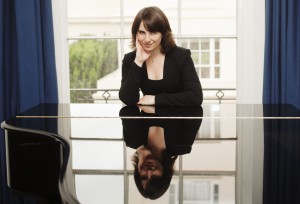
Herts Advertiser critic John Manning was bowled over by Alissa Firsova’s thrilling performance of Rachmaninov’s Third Piano Concerto
Rarely can I remember being so excited and at the same time so emotionally drained as I did on Saturday evening after Alissa Firsova’s remarkable performance of Rachmaninov’s Piano Concerto No 3.
This massive work is considered one of the most technically challenging in the piano repertoire but, as we have grown to expect, Alissa carried off her first public performance of the epic work with great panache – and, I understand, after just four weeks of preparation.
Rachmaninov’s work is unrelenting in the demands on the soloist who has little time to take a breath during its 40 minutes or so of unremitting work.
Yet Alissa’s performance with the St Albans Symphony Orchestra in St Saviour’s Church was full of fire and emotion. Not only did she thrill the packed audience, but she appeared to lift the orchestra to new heights.
Although brought up in St Albans, Alissa was born in Moscow and she has a great affinity with the best music from her native country. Her passion, as well as her tremendous technical ability and performing skill, flooded out in the performance, which clearly moved some people to tears.
It was fitting that, for once, the concerto came at the end of the concert for, as good as the orchestra’s earlier performances had been, they would have come as an anti-climax.
The concert had opened with Beethoven’s delightful Symphony No 8, a work full of fine melodies and fun which the orchestra under its conductor Bjorn Bantock settled down to play with great aplomb after a shaky opening.
Perhaps it is not a good idea to open a concert with a symphony before the orchestra has had a chance to warm up, although with this particular programme it was an understandable choice for the second work was the rarely heard Taras Bulba suite by Leos Janacek.
With difficult moments for the orchestra, the work is full of colour and demands some outstanding playing from the entire brass section which was more than capably given.
Unusually Janacek includes an organ in his score, not in a solo role, but as part of the orchestra, a detail which adds another level of colour to this exciting work.
Once more the orchestra demonstrated the huge leap forward it has made in recent years and, the the same time, Bjorn Bantock’s enthusiasm for introducing performers and audiences to rarely-heard but exciting music.
